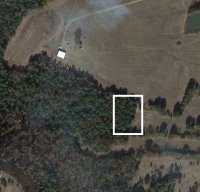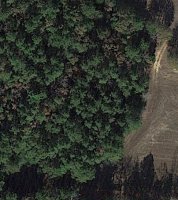farmerjan
Herd Master
- Joined
- Aug 16, 2016
- Messages
- 12,736
- Reaction score
- 52,579
- Points
- 768
- Location
- Shenandoah Valley Virginia
Don't know anything about the Geo Cell.... looks pretty interesting. It would sure help hold any gravel when the water is running, it won't be able to run down in little rivulets to cause eroding and becoming bigger "rivers" down the driveway. Here we can get something called crusher run.... it has the gravel and the "dust" in it. The dust does pack, it actually becomes more like a solid hard base, that holds the larger gravels and becomes more like "concrete. " One thing, they have pretty good side "ditches" so the water does not travel across the driveway. That is the biggest thing, you have to have ditches.... they don't have to be deep like a drop off, but they need to be deep enough, and if deep then should be fairly wide, so that the water will be able to run down them. And the road should not be flat.... the center has to have a bit of a crown so that the water will run towards the sides, and towards the ditches, rather than down the "driveway part", which causes the erosion also. Too flat and if nothing else, water lays and then you get pot holes. The shoulders/sides of the driveway should be lower than the center "crown" .
The trick to grading is to pull the sides up into the center, then go down the center and just level off the very center part. Here they actually will dig a couple inches off the shoulders when they do the gravel/dirt roads. There will be some dirt clumps in the road because of the angle of the grader blade slicing off some of the shoulder to get the angle right from the center of the road to the side. When grass starts to grow, then they mow, the organic matter builds up along the sides, and before you know it the shoulders are higher than the actual roadway.... then the water runs DOWN the road along the side and not OFF the road into the side ditch.
The first video of the rake/baler/accumulator was interesting. The rakes were actually the same basic roller bar or side delivery rakes as we use, but they were run on the PTO because they were still turning when she said she thought she had a broken bale in the earlier part.... ours are ground driven, they turn only when the tractor is in motion. You can get a left or a right hand side delivery rake and a friend has a frame that goes over top so he can use one on each side to feed the middle much like hers was. But those were made to do that and not 2 separate ones hooked together in tandem.
Our hay is seldom ever dry enough to just rake and sq. bale at the same time. We like to rake and get it rolled up so the bottom gets exposed to the sun and hopefully a breeze. And we have few fields where there is enough room to run that "long" of a piece of equipment.... with all 3 attached like that. Their hay was thinner too than most of ours is, although that might have been from tedding it out as well. It is proven that tedding several times will get it to dry better, more thoroughly.... but you have to weigh the costs of running a piece of equipment over the field that many times too.
Our one tractor that we bought from the friend who passed away, is equiped to have the propionic acid tank to put on the hay if the moisture is high to preserve it like the 2nd video showed. You have to be careful of it though.... have had 2 people that have llamas that say you can't feed them hay with it. We seldom use it, maybe twice when we first got the tractor.... I am not sure that the system is functional without some serious going over and probably repair.... we just are more likely to n ot cut until we have a good window, and if the forecast changes, we will roll if need be. We kick ours into wagons so can get them to the barn quicker than picking up the "pods" as they call them, and loading them on a trailer....but then they have to get handled there and stacked in a hay mow. 6 of one half a dozen of another. Unless someone is coming with a flat bed trailer that you can just load them onto.... right out of the field, then that accumulator is real nice....
There is another accumulator that now puts them into small stacks of 21 or 27 or something and "bales and ties that stack" into what we call a cube in this area. 2 different guys invested in them, and they do some custom work for others to help pay for them to use for their own hay.
The trick to grading is to pull the sides up into the center, then go down the center and just level off the very center part. Here they actually will dig a couple inches off the shoulders when they do the gravel/dirt roads. There will be some dirt clumps in the road because of the angle of the grader blade slicing off some of the shoulder to get the angle right from the center of the road to the side. When grass starts to grow, then they mow, the organic matter builds up along the sides, and before you know it the shoulders are higher than the actual roadway.... then the water runs DOWN the road along the side and not OFF the road into the side ditch.
The first video of the rake/baler/accumulator was interesting. The rakes were actually the same basic roller bar or side delivery rakes as we use, but they were run on the PTO because they were still turning when she said she thought she had a broken bale in the earlier part.... ours are ground driven, they turn only when the tractor is in motion. You can get a left or a right hand side delivery rake and a friend has a frame that goes over top so he can use one on each side to feed the middle much like hers was. But those were made to do that and not 2 separate ones hooked together in tandem.
Our hay is seldom ever dry enough to just rake and sq. bale at the same time. We like to rake and get it rolled up so the bottom gets exposed to the sun and hopefully a breeze. And we have few fields where there is enough room to run that "long" of a piece of equipment.... with all 3 attached like that. Their hay was thinner too than most of ours is, although that might have been from tedding it out as well. It is proven that tedding several times will get it to dry better, more thoroughly.... but you have to weigh the costs of running a piece of equipment over the field that many times too.
Our one tractor that we bought from the friend who passed away, is equiped to have the propionic acid tank to put on the hay if the moisture is high to preserve it like the 2nd video showed. You have to be careful of it though.... have had 2 people that have llamas that say you can't feed them hay with it. We seldom use it, maybe twice when we first got the tractor.... I am not sure that the system is functional without some serious going over and probably repair.... we just are more likely to n ot cut until we have a good window, and if the forecast changes, we will roll if need be. We kick ours into wagons so can get them to the barn quicker than picking up the "pods" as they call them, and loading them on a trailer....but then they have to get handled there and stacked in a hay mow. 6 of one half a dozen of another. Unless someone is coming with a flat bed trailer that you can just load them onto.... right out of the field, then that accumulator is real nice....
There is another accumulator that now puts them into small stacks of 21 or 27 or something and "bales and ties that stack" into what we call a cube in this area. 2 different guys invested in them, and they do some custom work for others to help pay for them to use for their own hay.

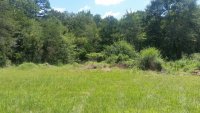
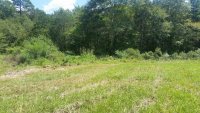
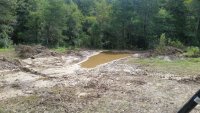
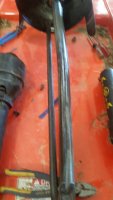
 Maybe if I live to be 150 I might learn to fix my equipment, but this time, I wimped out.
Maybe if I live to be 150 I might learn to fix my equipment, but this time, I wimped out.